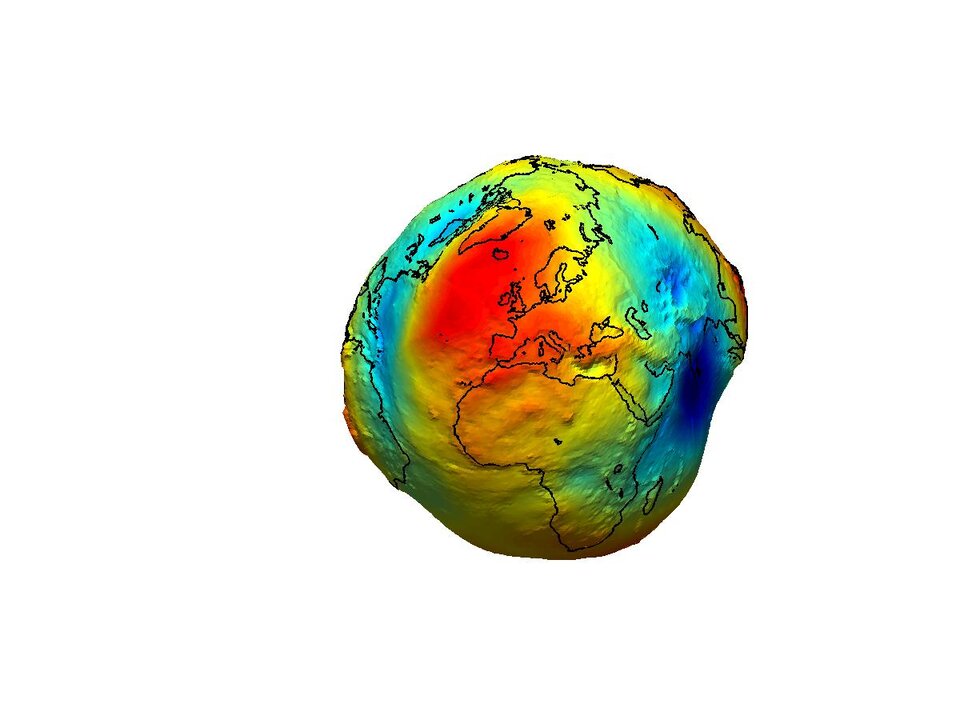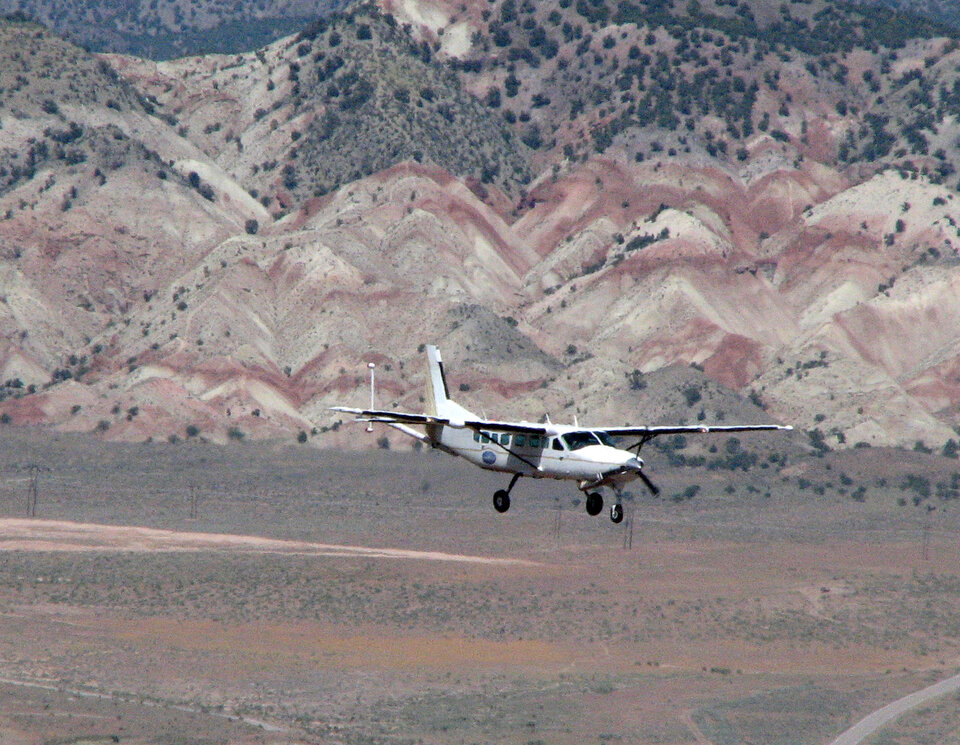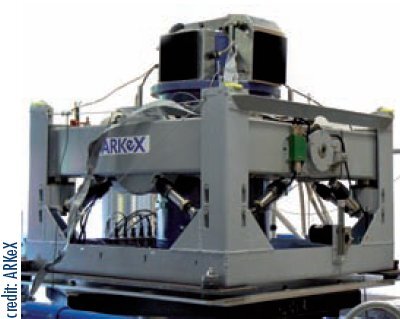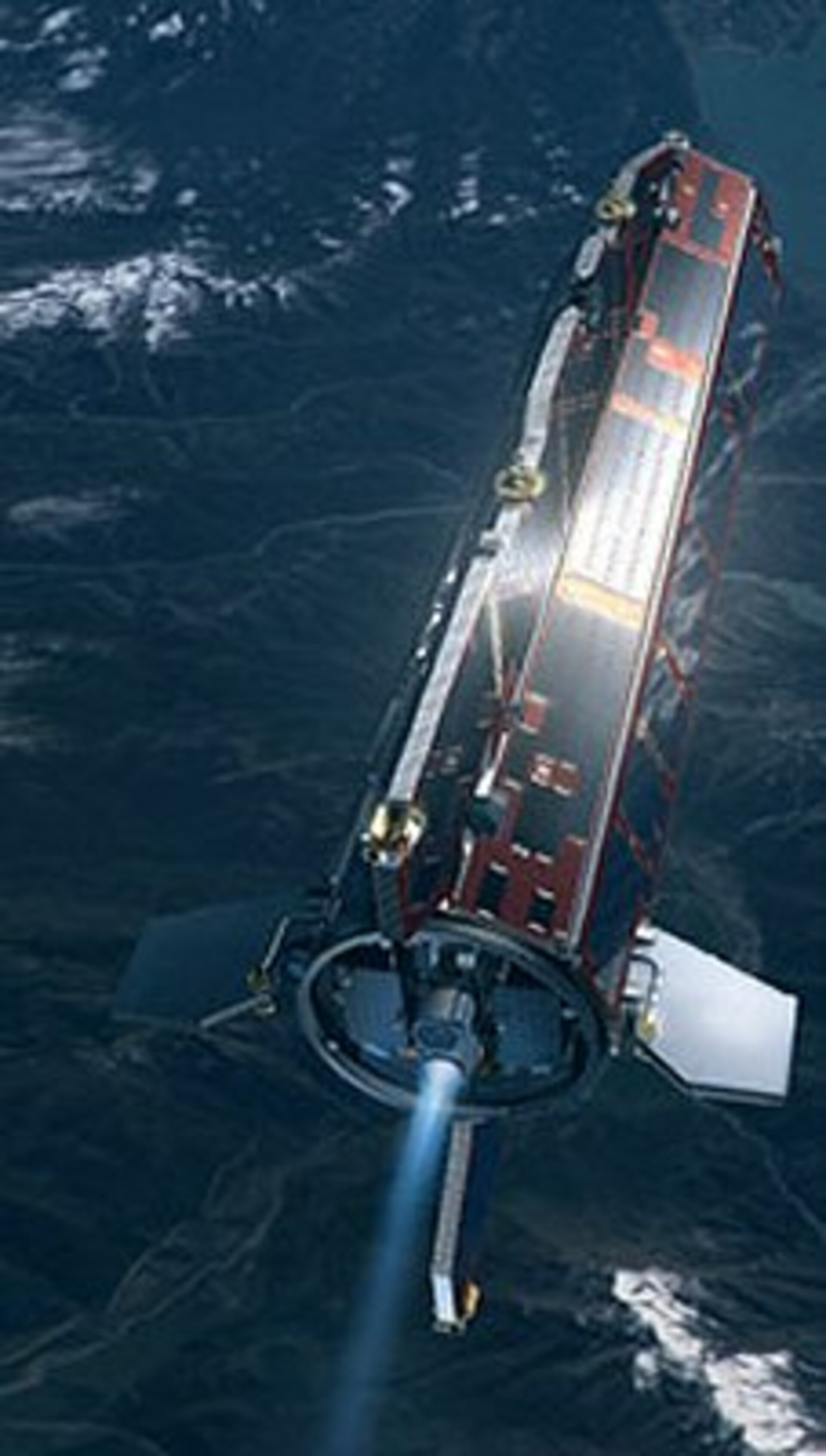Space technology developed for measuring the height of the ocean surface helps to find natural resources on Earth
UK based company ARKeX, operating in the geophysical imaging technology area, announced a 30 million dollar fundraising. One of ARKeX’s core technologies is their superconducting gravity gradiometer, which was initially developed by industry as an alternative gravity gradiometry measurement instrument for ESA's Gravity field and steady-state Ocean Circulation Explorer (GOCE) mission.
Space gravity gradiometry aids in the gravitational mapping of the Earth
The technology of superconducting gradiometry was originally developed for an alternative instrument for measuring gravity for ESA’s Gravity-field and steady state Ocean Circulation Explorer (GOCE) mission.

The method measures the differential acceleration of the Earth’s gravity field over short distances. The minute changes that the gravity gradiometer measures are directly related to the density of the subsurface rock. So gravity gradiometry is effectively the rate of change of rock properties.
GOCE will measure global variations in the gravity field with extreme detail and accuracy. It will be the first ever mission to employ the concept of gravity gradiometry to do this. This will result in a unique model of the geoid, which is the surface of equal gravitational potential defined by the gravity field, which is crucial for being able to accurately measure ocean circulations and sea-level change affected by climate change.
GOCE will also deliver data that will give us a better understanding of the processes occurring inside the Earth.
Gravity gradiometry on Earth makes it easier to detect mineral resources

This space-derived technology was advanced by British geophysical imaging company ARKeX for use in the oil and gas industry, and supported by managing director of ESA Technology Transfer Programme’s Technology Broker Qi3, Nathan Hill, from its very beginnings. From the data acquired through the gradiometer, an image of the subsurface geology can be derived. This image is a vital piece of information for oil and gas companies looking to drill wells or plan further exploration.
The ARKeX gravity gradiometry tools offer other major advantages for the oil and gas industry. Seismic surveys are the prevalent method of finding new gas or oil deposits and often use dynamite to produce sounds waves. Gravity gradiometry on the other hand is a noninvasive technology, which can also be used in environmentally sensitive areas without causing immediate disruption. The instrument is mounted in a light aircraft and a survey grid is flown over the area to record the different signals from the rock below. As a large area can be covered quickly from the air, the cost of performing a survey is 10 times cheaper than performing a traditional seismic survey.
30 million dollars investment to support development of superconductive gravity gradiometer

ARKeX is currently in the process of building and testing its own bespoke, superconductive gravity gradiometer, the EGG (Exploration Gravity Gradiometer). The EGG is designed to achieve an order of magnitude improvement in resolution. This extra sensitivity is achieved through the use of superconductivity.
The EGG is cooled to minus 269°C with liquid helium to take advantage of super conductivity properties, namely zero electrical resistance and the exclusion of the interior magnetic field. It enables accurate measurement of very tiny signals and therefore as a result a higher resolution picture can be produced.

The EGG will enable a wider range of geologies to be surveyed in greater detail, as the extra sensitivity will be able to measure smaller density contrasts that the non-superconductive system is not able to see.
Following successful early trials of the EGG, ARKeX has an aircraft under contract and is starting trials of the full system. Once operational, the EGG will be of tremendous benefit to the oil and gas industry as well as having other potential applications in defense, environmental surveying and even back in to the space program.
ESA's Technology Transfer Programme Office (TTPO)
The main mission of the TTPO is to facilitate the use of space technology and space systems for non-space applications and to demonstrate the benefit of the European space programme to European citizens. The office is responsible for defining the overall approach and strategy for the transfer of space technologies, including the incubation of start-up companies and their funding. For more information, please contact:
ESA’s Technology Transfer Programme Office
Frank M. Salzgeber
European Space Agency ESA
Keplerlaan 1, 2200 AG, Noordwijk ZH
The Netherlands
Phone: +31 (0) 71 565 6208
Email: ttp @ esa.int
Website: http://www.esa.int/ttp
This article was published in the "Space for Business", ESA’s Technology Transfer Programme Newsletter, issue 2, 2008.




